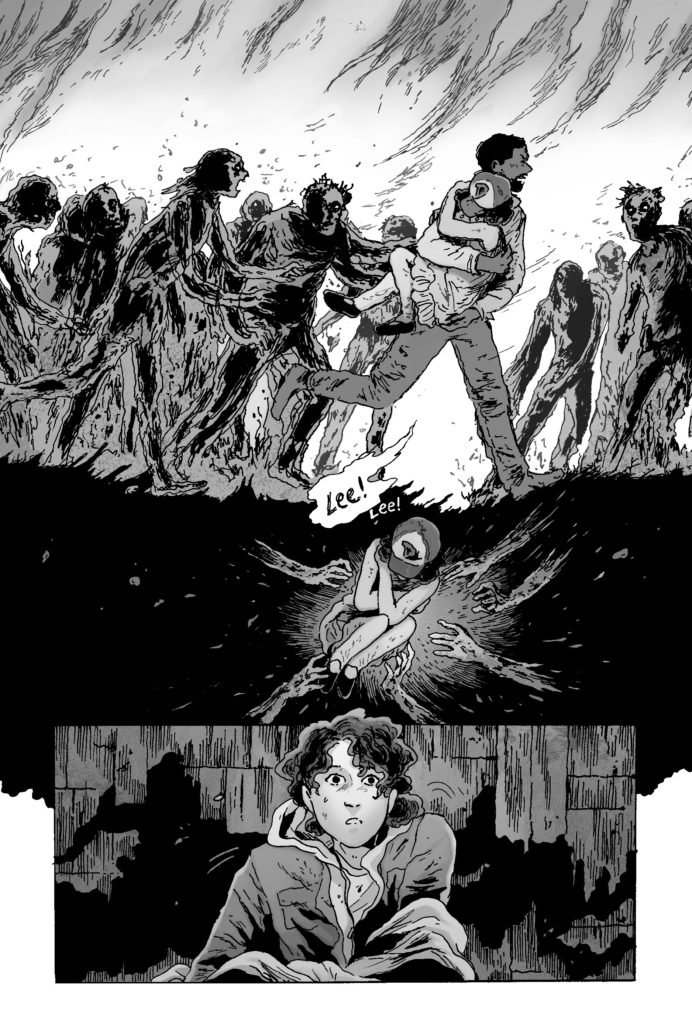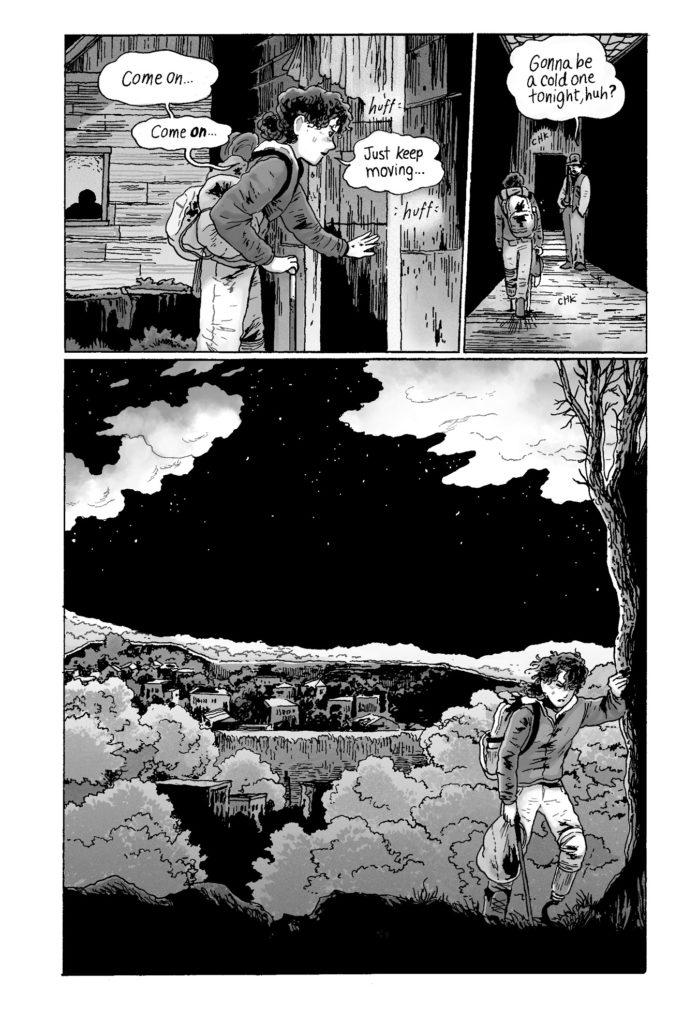Entering an Undead World
How do you make stories about the undead fresh?
If you’re behind The Walking Dead, which began as a TV show in 2010 and has morphed into a media franchise of spinoffs, podcasts, video games and even a ride at a British amusement park, you look for a graphic novelist like Tillie Walden.
Walden’s newest graphic novel, Clementine, is her first endeavor into The Walking Dead’s zombified world. Throughout the novel, Walden captures a post-apocalyptic world in the northeastern U.S. as Clementine travels the area with an unlikely companion, finding community with survivors in a zombie-infested world (or as they’re referred to in TWD, “walkers”).
Her work doesn’t seem to fit a zombie apocalypse universe: That work includes Spinning, her memoir about growing up as a competitive ice skater; On a Sunbeam, a sci-fi story about someone searching for love; and Are You Listening?, about two women on a Texas roadtrip.
And at 26, Walden has received numerous awards. She won the 2018 Eisner Award for Best Reality-Based Work for her memoir Spinning, the 2020 Eisner Award for Best Graphic Album (New) – for her Are You Listening? and a 2018 Los Angeles Times Book Prize for On a Sunbeam.
Before she canceled her West Coast tour for “unforeseen circumstances,” Walden was scheduled to speak at the downtown Eugene Books With Pictures comic shop event Friday, July 29. Eugene Weekly chatted with Walden via email about her influences in writing and drawing the world of her latest graphic novel Clementine, as well as the role the Japanese film anime studios Ghibli (the production company behind classics such as My Neighbor Totoro, Kiki’s Delivery Service, Howl’s Moving Castle and more) has played in her artistic upbringing.
Clementine captures a grim apocalyptic world. Yet there’s something beautiful about it at the same time. What were some of your inspirations in creating this world?
Tillie Walden: Thank you so much! I was really inspired by the view out my window, actually. I live in Vermont, maybe 30 minutes away from where the book takes place. We also live deep in the woods off a dirt road, very removed. So I spent a lot of time looking at the trees and thinking about our lives here and wondering what would happen if the end of the world came. What would it mean for this place, for us, for our future? And I think what I kept coming back to is that even if walkers were walking towards us, this would still be the most beautiful place. Nature is so resilient. I really do love thinking about the beauty that would come along with the decay in the apocalypse. The quiet, the openness, the ability of roots and leaves to take cities back to their domain.

The Walking Dead (TWD) has become a titan. What was your process in developing a story to fit canon but can also stand alone?
It certainly is! I think I had to let go of the pressure, honestly. There’s no way I can make a story that is the same as what has come before in TWD universe, and I needed to feel like I was allowed to wander in whatever direction called to me. It helps that the entire team at Skybound [developer behind TWD video games], Robert Kirkman [comic book writer and TWD co-creator] included, were nothing but encouraging. Everyone believed in me, and trusted me. So it meant that making a story in this universe felt as natural as making any other story. Just, you know, there’s zombies.
How was writing Clementine different compared to your previous works, like On a Sunbeam? While fitting to a larger universe, did you find that it made you approach writing in a different manner? And were there any lessons from writing Clementine — and fitting it into another comic universe — that you’d like to see in your future works?
I do think writing the plot of Clementine was really different than my other books. I certainly still found time in Clementine to have my quiet queer moments (can’t make a book without them), but I was really interested in writing a story that had action, drive and intensity to it. Which, if you’ve read my other work, is different! I’m used to a pretty mellow pace of storytelling. My editor helped a lot, and I spent a lot of time working on the pacing of the book. And not surprisingly, I’m facing the same challenge all over again with Clem book 2! It’s funny how you work so hard, you feel like you get better at plot and writing, and then when you have to do it again, it’s like… wait, how do I write?

I’ve read that Studio Ghibli has been a big influence on you as an artist. Do you see that influence’s footprint in Clementine?
I see Studio Ghibli everywhere in my work! There’s a lot of moments in Ghibli movies where characters are on a precipice — they run too close to the edge, they fly too high, too low, they swing around too fast — I think I see that in Clementine. I also think Ghibli movies taught me so much about the majesty of setting. And moments like the one where Clementine and Amos go up a ski lift and it’s impossibly high, and fast and small and beautiful — that’s straight out of Ghibli for me. The feeling of scale. Now I gotta go rewatch some of these movies!
Now that you’ve entered the world of writing for a large universe like TWD, is there another comic world you’d like to tell a story within — such as something in DC, Marvel or even Studio Ghibli?
Gosh, good question! After I wrap up Clementine (talk to me in a few years and I’ll be there!) I think I’ll likely go back to my own chaotic world of stories. TWD has been the perfect home for me right now, but I’ll be excited to get back to making my own worlds from scratch. Of course, opportunities are strange and wily, you never know what you’ll be working on one year to the next. But I think it’s safe to say that in a few years I’ll probably be drawing underground cities in the ocean that I saw in a dream one time.
Tillie Walden’s graphic novels are available for purchase at Books With Pictures at 99 Broadway C. For more information, visit BooksWithPictures.com.